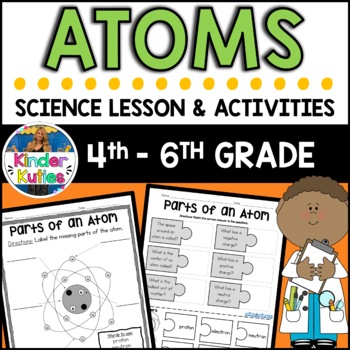Parts of an Atom Lesson Ideas and Activities | Science Chemistry NGSS
- PDF
- Easel Activity
What educators are saying
Also included in
- What's the Matter? This is a science MATTER unit plan that includes lesson plans, worksheets, and experiments. It is most appropriate for 3rd- 6th grade. This MATTER BUNDLE focuses on atoms, states of matter, solids, liquids, gases, properties of matter, state changes, mixtures, solutions, densitPrice $15.00Original Price $18.75Save $3.75
Description
What is the smallest part of matter? The Atom! Need a way to engage your students while learning about atoms, then you have come to the right place. This lesson ideas and activity pack is the perfect addition to any 4th-6th grade science classroom while learning about atoms, protons, neutrons, electrons, orbitals, and the nucleus of an atom.
✨ How to use them?
- independently
- small group
- whole group
- centers
- homework
- assessment
- exit tickets.
✨ What's included?
- Lesson ideas
- Create your own atom STEM activity
- Notes pages
- Posters
- Diagrams
- Cut & Paste Activity
- Answer KEY
✨ This Lesson is included as part of my What's The Matter Unit Plan Bundle ✨
You May Also Like:
Parts of an Atom Lesson Ideas and Activities | Science Chemistry NGSS
States of Matter | solid, liquid, gas | Lesson Activities | Science Chemistry NGSS
State Changes of Matter | Science Chemistry Lesson Activities Experiments | NGSS
Mixtures & Solutions of Matter | Lesson Activities | Science Chemistry NGSS
Density Sinking & Floating Lesson Experiments, Activities | Science Chem NGSS
Please leave feedback to earn TPT credits!
Copyright©KinderKuties
All rights reserved. Purchase or download of this product entitles the purchaser/downloader to the right to reproduce the pages in limited quantities for single classroom use only. Duplication for multiple classrooms, an entire school, an entire school system, or commercial purposes is strictly forbidden without written permission from the creator. If a colleague is interested in this product, please refer them to my TpT store to purchase an additional license. Copying any part of this product and placing it on the internet is also prohibited and a violation of the Digital Millennium Copyright Act (DMCA). Thank you for respecting my work!







